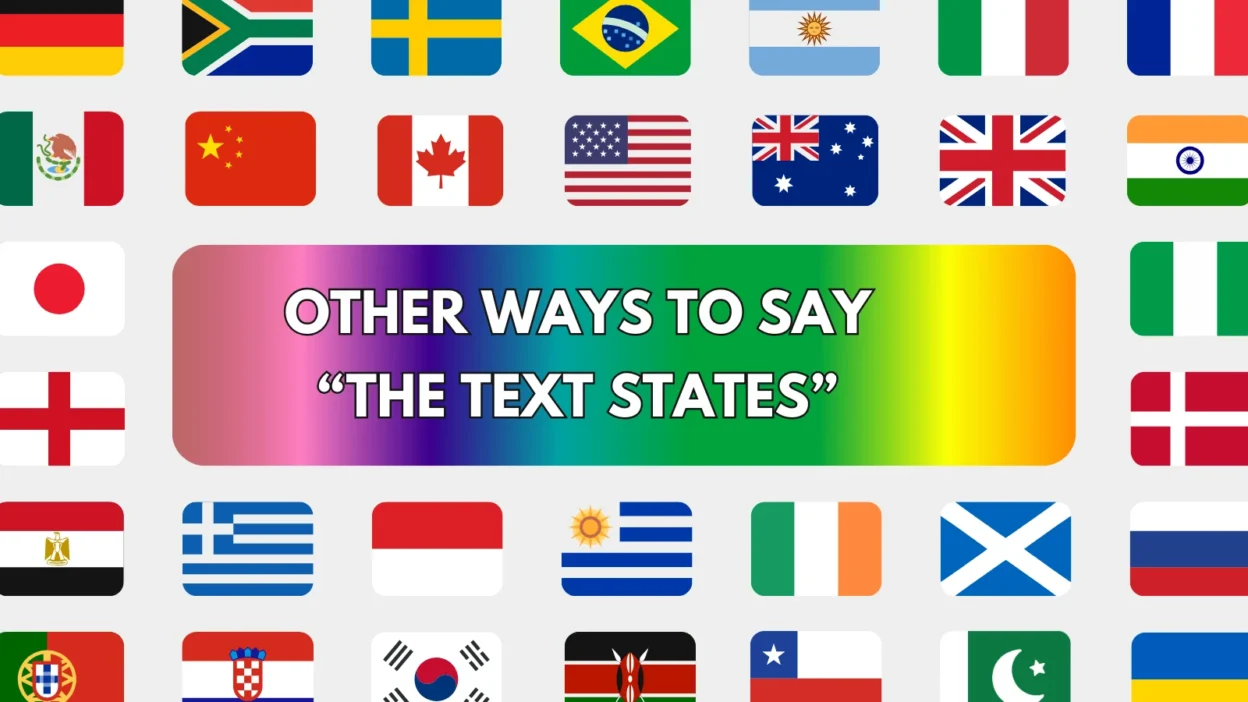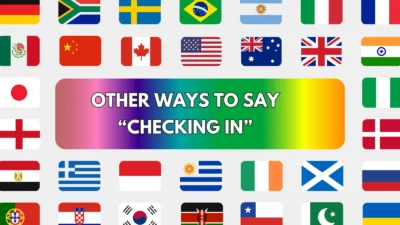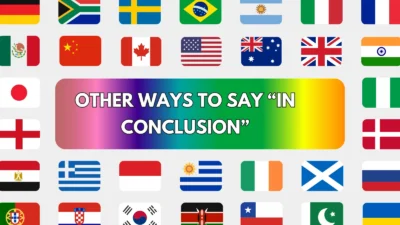“The text states” is a clear and commonly used phrase in academic writing, especially when referring to a quote or specific evidence from a source. However, using it too frequently can make your writing feel repetitive or robotic. By using varied expressions, you can maintain clarity while adding sophistication and variety to your essays, reports, or analyses.
Here are 25 alternatives to “the text states”, each explained with meaning, detailed usage, a scenario example, best context, and tone.
1. According to the Text
Meaning
Refers directly to what the text says or claims.
Detailed Explanation
A widely accepted and neutral phrase perfect for citing textual evidence.
Scenario Example
According to the text, climate change is accelerating due to human activity.
Best Use
Essays, academic writing, reports.
Tone
Formal, objective.
2. The Author Writes
Meaning
Indicates what the writer of the text has said.
Detailed Explanation
Highlights the author’s voice, which is useful in literary analysis or book discussions.
Scenario Example
The author writes that the protagonist “struggled with his identity.”
Best Use
Literary essays, book reports.
Tone
Analytical, respectful.
3. As Mentioned in the Passage
Meaning
Points to a specific detail previously discussed in the text.
Detailed Explanation
Adds a natural transition from your analysis to the evidence.
Scenario Example
As mentioned in the passage, the main character felt trapped by her situation.
Best Use
Essays, paragraphs requiring textual support.
Tone
Smooth, explanatory.
4. The Text Explains
Meaning
Indicates that the text provides clarification or details.
Detailed Explanation
Slightly more active than “the text states,” adding clarity or background.
Scenario Example
The text explains how deforestation contributes to global warming.
Best Use
Informational texts, science or history assignments.
Tone
Neutral, informative.
5. The Passage Describes
Meaning
Shows that the text gives a vivid or detailed account of something.
Detailed Explanation
Useful when referencing imagery, setting, or storytelling.
Scenario Example
The passage describes the forest as “dark, silent, and full of secrets.”
Best Use
Literature, narrative analysis.
Tone
Descriptive, interpretive.
6. The Author Notes
Meaning
Indicates that the author makes a specific observation.
Detailed Explanation
Adds variety while maintaining formality.
Scenario Example
The author notes that poverty rates are increasing in urban areas.
Best Use
Formal essays, opinion pieces.
Tone
Neutral, academic.
7. It Is Stated That
Meaning
A passive form to reference information from the text.
Detailed Explanation
Useful when the author’s identity is not the focus.
Scenario Example
It is stated that the empire fell due to internal conflicts.
Best Use
Objective or formal writing.
Tone
Impersonal, factual.
8. The Text Indicates
Meaning
Suggests that the text points out or signals something important.
Detailed Explanation
Helps convey subtle ideas or conclusions in nonfiction.
Scenario Example
The text indicates a strong link between exercise and mental health.
Best Use
Scientific or analytical writing.
Tone
Professional, precise.
9. The Passage Suggests
Meaning
Implies or infers something without stating it directly.
Detailed Explanation
Great for interpretation and analysis in literature or persuasive texts.
Scenario Example
The passage suggests that freedom is not absolute in the story’s society.
Best Use
Argumentative essays, critical analysis.
Tone
Analytical, interpretive.
10. The Article States
Meaning
Refers specifically to information provided in an article.
Detailed Explanation
A direct way to cite non-fiction or journalistic sources.
Scenario Example
The article states that renewable energy is becoming more affordable.
Best Use
Research papers, article reviews.
Tone
Factual, clear.
11. As the Text Reveals
Meaning
Points to a truth or detail uncovered by the text.
Detailed Explanation
Adds drama or emphasis to the information presented.
Scenario Example
As the text reveals, the king’s actions were not as noble as they seemed.
Best Use
Narrative, persuasive essays.
Tone
Revealing, thoughtful.
12. The Evidence Shows
Meaning
Supports an argument or conclusion using facts from the text.
Detailed Explanation
Useful when citing proof or supporting claims.
Scenario Example
The evidence shows that the author believes education is the key to equality.
Best Use
Persuasive writing, debates.
Tone
Assertive, logical.
13. As Seen in the Text
Meaning
Directs the reader to look at something demonstrated or quoted in the passage.
Detailed Explanation
Easy-to-use transition for embedding quotes.
Scenario Example
As seen in the text, the character chooses courage over comfort.
Best Use
Literary analysis, summaries.
Tone
Clear, supportive.
14. The Text Demonstrates
Meaning
Shows that the text actively proves or illustrates something.
Detailed Explanation
Used to emphasize how the text supports your point.
Scenario Example
The text demonstrates how greed leads to downfall.
Best Use
Argumentative essays, presentations.
Tone
Confident, structured.
15. From the Text, We Learn
Meaning
Introduces a learning point or insight from the reading.
Detailed Explanation
Encourages reflection and understanding.
Scenario Example
From the text, we learn that honesty can be both rewarding and painful.
Best Use
Reflections, thematic essays.
Tone
Insightful, reflective.
16. The Passage Illustrates
Meaning
Points to an example or image provided in the text.
Detailed Explanation
Often used when the text gives visual or detailed support.
Scenario Example
The passage illustrates the harsh realities of poverty.
Best Use
Literature, descriptive writing.
Tone
Visual, vivid.
17. The Text Highlights
Meaning
Emphasizes a specific point or theme.
Detailed Explanation
Useful for drawing attention to key parts of a reading.
Scenario Example
The text highlights the importance of resilience in tough times.
Best Use
Theme discussions, summaries.
Tone
Emphatic, focused.
18. In the Text, It Is Explained That
Meaning
Directs the reader to a detailed explanation within the passage.
Detailed Explanation
Adds variety while keeping your writing structured.
Scenario Example
In the text, it is explained that ecosystems are interdependent.
Best Use
Science reports, informational writing.
Tone
Explanatory, clear.
19. The Narrative States
Meaning
Refers specifically to a story or fictional account.
Detailed Explanation
Perfect for referring to plots or events in storytelling.
Scenario Example
The narrative states that the hero was once a coward.
Best Use
Fiction analysis, book reports.
Tone
Neutral, narrative.
20. The Author Claims
Meaning
Highlights an argument or stance made by the writer.
Detailed Explanation
Good for persuasive or argumentative writing analysis.
Scenario Example
The author claims that modern society undervalues kindness.
Best Use
Opinion essays, critiques.
Tone
Assertive, analytical.
21. The Text Confirms
Meaning
Proves or verifies a specific point from the content.
Detailed Explanation
Useful when using evidence to validate a statement.
Scenario Example
The text confirms the theory with multiple examples.
Best Use
Research, academic papers.
Tone
Confident, evidence-based.
22. The Passage Points Out
Meaning
Draws attention to a fact or detail.
Detailed Explanation
Engaging and smooth for transitions.
Scenario Example
The passage points out that trust is earned, not given.
Best Use
Literature, moral reflections.
Tone
Clear, direct.
23. The Text Makes It Clear That
Meaning
Emphasizes the clarity of the information or message.
Detailed Explanation
Useful when the author’s message is strong or unambiguous.
Scenario Example
The text makes it clear that prejudice plays a central role.
Best Use
Persuasive essays, close reading.
Tone
Strong, declarative.
24. The Article Highlights
Meaning
Stresses key findings or points in a source.
Detailed Explanation
Effective for citing informational or journalistic sources.
Scenario Example
The article highlights the impact of fast fashion on the environment.
Best Use
Reports, reviews.
Tone
Factual, organized.
25. We Read That
Meaning
A conversational and reader-inclusive way to reference the text.
Detailed Explanation
Useful in collaborative or interactive writing styles.
Scenario Example
We read that the villagers feared the legend was true.
Best Use
Class discussions, casual analysis.
Tone
Inclusive, light.
Conclusion
Using the phrase “the text states” works, but relying on it too often can dull your writing. These 25 diverse alternatives help you bring variety, depth, and professionalism to your academic or analytical communication. Try rotating through them to keep your essays engaging and your arguments strong.



